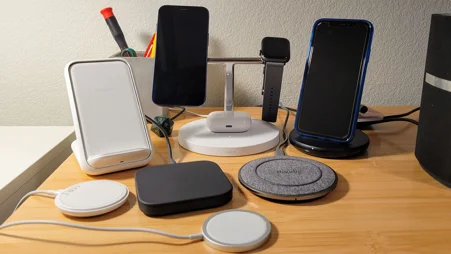Wireless charging technology has revolutionized the way we power our devices, offering a convenient and hassle-free alternative to traditional wired charging methods. Among the various wireless charging standards, VN88 Rezence has emerged as a promising contender, offering unique capabilities and advantages. In this article, we will delve into the differences between Rezence wireless charging technologies and explore how they work, their advantages, and their potential future applications.
In today’s fast-paced world, where we rely heavily on our smartphones, tablets, and other portable devices, the need for efficient and convenient charging solutions has become paramount. Wireless charging technology addresses this need by eliminating the clutter of cables and enabling seamless power transfer through the air. Rezence, developed by the Alliance for Wireless Power (A4WP), is a magnetic resonance-based wireless charging technology that stands out for its extended range and versatility. Understanding the differences between Rezence wireless charging technologies is crucial for consumers, manufacturers, and industry professionals alike.
1. Passive Rezence Wireless Charging
How Passive Rezence Works
Passive Rezence wireless charging is the most common type of Rezence technology. It utilizes a single transmitter coil to send power to multiple receiver coils embedded in devices such as smartphones, tablets, and wearables. The transmitter generates a magnetic field that resonates at a specific frequency, allowing the receiver coils to convert this magnetic energy into electrical energy for charging.
Passive Rezence operates at a frequency of 6.78 MHz, which allows for efficient power transfer over distances of up to 5 centimeters. This technology is particularly well-suited for charging smaller devices that can be placed in close proximity to the transmitter.
Advantages of Passive Rezence
- Simplicity: Passive Rezence wireless charging systems are relatively simple to implement and require fewer components, making them cost-effective.
- Multiple device charging: A single transmitter can charge multiple devices simultaneously, as long as they are within the charging range.
- Spatial freedom: Devices do not need to be precisely aligned with the transmitter, allowing for more flexibility in placement.
Disadvantages of Passive Rezence
- Limited range: The charging range is restricted to a maximum of 5 centimeters, which may not be suitable for larger devices or applications requiring longer charging distances.
- Interference: Passive Rezence systems can be susceptible to interference from nearby metal objects or other wireless signals, which can affect charging efficiency.
2. Active Rezence Wireless Charging
How Active Rezence Works
Active Rezence wireless charging technology employs multiple transmitters and receivers to create a more efficient and adaptive power transfer system. The transmitters and receivers communicate with each other, adjusting their frequencies and power levels to optimize the charging process dynamically.
Active Rezence operates at a higher frequency range of 6.78 MHz to 27.12 MHz, enabling power transfer over distances of up to 40 centimeters. This extended range makes Active Rezence suitable for charging larger devices, such as laptops and even electric vehicles.
Advantages of Active Rezence
- Extended range: Active Rezence can charge devices over greater distances, up to 40 centimeters, making it more versatile and suitable for a wider range of applications.
- Adaptive charging: The communication between transmitters and receivers allows for dynamic adjustment of power levels and frequencies, optimizing charging efficiency.
- Spatial flexibility: Devices can be charged within a larger charging area, providing more freedom in placement and movement.
Disadvantages of Active Rezence
- Complexity: Active Rezence systems are more complex, requiring multiple transmitters and receivers, which can increase the overall cost and complexity of implementation.
- Interference management: Managing interference between multiple transmitters and receivers requires advanced algorithms and techniques, which can add to the system’s complexity.
- Power consumption: Active Rezence systems may consume more power due to the additional communication and adaptive charging mechanisms.
3. VN88 Rezence Wireless Charging Efficiency
Power Transfer Efficiency
One of the key factors in evaluating wireless charging technologies is their power transfer efficiency. Rezence wireless charging systems are designed to be highly efficient, with typical efficiencies ranging from 70% to 85%. This efficiency is comparable to, or in some cases better than, traditional wired charging methods.
The efficiency of Rezence wireless charging systems depends on several factors, including the distance between the transmitter and receiver, the presence of nearby metal objects, and the quality of the components used. Active Rezence systems generally offer higher efficiency due to their adaptive charging capabilities and extended range.
Minimizing Energy Loss
To minimize energy loss and improve efficiency, Rezence wireless charging systems employ various techniques. These include the use of high-quality materials for the coils and resonant circuits, as well as advanced power management algorithms that dynamically adjust the power levels and frequencies.
Additionally, Rezence systems can incorporate shielding mechanisms to reduce interference from nearby metal objects, which can negatively impact charging efficiency.
4. VN88 Rezence Wireless Charging Applications
Consumer Electronics
One of the primary applications of link VN88 Rezence is in the consumer electronics market. Smartphones, tablets, laptops, and other portable devices can benefit greatly from the convenience and ease of use offered by Rezence wireless charging. Many manufacturers are already integrating Rezence wireless charging capabilities into their products, providing consumers with a seamless and cable-free charging experience.
Automotive Industry
The extended range and versatility of Active Rezence wireless charging make it an attractive solution for the automotive industry. Electric vehicles (EVs) and hybrid vehicles can be equipped with Rezence wireless charging systems, allowing for convenient and efficient charging without the need for physical cable connections.
Some automotive manufacturers are exploring the integration of Rezence wireless charging pads into parking spaces or garages, enabling drivers to simply park their vehicles and have them charged automatically.
Industrial and Commercial Applications
Rezence wireless charging technology also has potential applications in industrial and commercial settings. For example, it can be used to power sensors, monitoring devices, and other equipment in environments where wired connections are impractical or hazardous.
In warehouses and logistics centers, Rezence wireless charging systems can be integrated into autonomous mobile robots (AMRs) and automated guided vehicles (AGVs), eliminating the need for frequent battery replacements or wired charging stations.
5. Rezence Wireless Charging Standards and Interoperability
Rezence Certification and Standards
To ensure interoperability and consistent performance, the Alliance for Wireless Power (A4WP) has established certification standards for Rezence wireless charging technology. Devices and systems that meet these standards are certified as Rezence-compliant, ensuring compatibility with other Rezence-enabled products.
The A4WP works closely with other industry organizations, such as the Wireless Power Consortium (WPC) and the AirFuel Alliance, to promote interoperability and standardization across different wireless charging technologies.
Interoperability Challenges
While Rezence wireless charging technology offers many benefits, there are still challenges to address in terms of interoperability. Different manufacturers may implement Rezence in slightly different ways, which can lead to compatibility issues between devices and charging systems from different vendors.
To overcome these challenges, the A4WP and other industry organizations are working to establish more comprehensive standards and guidelines, ensuring that Rezence-enabled devices and charging systems can seamlessly work together, regardless of their manufacturer.
6. Future Developments and Challenges
Advancements in Rezence Technology
The future of Rezence wireless charging technology is bright, with ongoing research and development efforts focused on improving its performance, efficiency, and range. Researchers are exploring the use of advanced materials, such as metamaterials and graphene, to enhance the magnetic coupling and reduce energy losses in Rezence systems.
Additionally, there is a growing interest in developing wireless charging systems that can operate at higher frequencies, potentially enabling power transfer over even greater distances while maintaining high efficiency.
Integration with 5G and IoT
As the adoption of 5G and the Internet of Things (IoT) continues to grow, there is a increasing demand for wirelessly powered devices and sensors. Rezence wireless charging technology has the potential to play a crucial role in enabling these applications by providing a reliable and efficient means of powering IoT devices and sensors without the need for wired connections or frequent battery replacements.
Challenges and Limitations
Despite the promising developments and potential applications, Rezence wireless charging technology still faces several challenges and limitations. One of the main challenges is the potential for electromagnetic interference (EMI) caused by the magnetic fields used in Rezence systems. This interference can affect the performance of nearby electronic devices and systems, and measures must be taken to mitigate its impact.
Additionally, the cost of Rezence wireless charging systems, particularly for Active Rezence implementations, can be a barrier to widespread adoption, especially in cost-sensitive applications.
Conclusion
VN88 Rezence wireless charging technology offers a compelling solution for powering our devices in a convenient and efficient manner. The differences between Passive and Active Rezence technologies cater to varying application requirements, with Passive Rezence being well-suited for smaller devices and shorter charging distances, while Active Rezence excels in charging larger devices over extended ranges.
As the demand for wireless charging continues to grow, Rezence technology is poised to play a significant role in shaping the future of power delivery. With ongoing advancements in efficiency, range, and interoperability, Rezence wireless charging has the potential to revolutionize how we interact with and power our devices across various industries, from consumer electronics to automotive and industrial applications.





